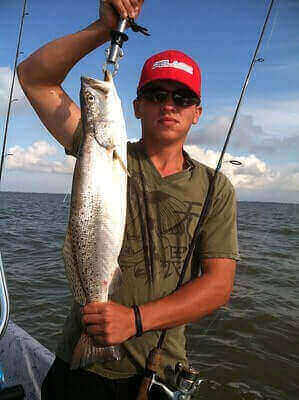Disclosure: We may earn commissions if you purchase products after clicking on a link from our site.
Do you want to learn how to catch a lot of trout? Trout are abundant and active at all times of the year. They are also elusive and great fighters. Additionally, trout is a good fish to eat. If you are looking for trout fishing tips for beginners, then this article will give you the tips needed to catch and fill your boat or line with trout.
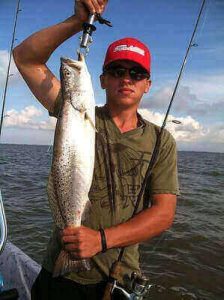
Table of Contents
- 1 How To Catch Trout
- 2 Trout Fishing Tackle
- 3 How To Catch Trout In A Lake
- 4 How To Catch Trout In A River
- 5 How To Catch Trout In A Pond
- 6 How To Catch Trout In A Lake From Shore
- 7 How To Catch Trout In A Creek
- 8 How To Catch Trout In Colorado
- 9 How To Catch Trout In A Stream
- 10 How To Catch Trout Ice Fishing
- 11 Trout Fishing Tips For Beginners
- 12 Trout Live Baits
- 13 Trout Artificial Lures
- 14 The Bottom Line
How To Catch Trout
1. Still Fishing
Still fishing is one of the popular fishing methods to catch trout. When still fishing, drop the bait in the water and just wait for the fish to bite. When you get a bite, reel it in. Still fishing can be done at a pier, dock, bridge, or other structure. When still fishing you just keep the bait in the water and don’t move the line. When fish smell the bait, they will come and strike the bait.
2. Bobber Fishing
Bobber fishing is another fishing method that can be effective when fishing for trout. You can use bobber fishing when the fish is near the surface or when you want to keep the bait above weeds and other snags in the water.
3. Baitcasting
Casting baits into the water and reeling in the fish is another popular fishing method used by anglers to catch trout. Bait and lures can be used to catch fish by casting baits.
4. Trolling
You can also catch trout by trolling with lures. When trolling, you move the boat slowly and have the bait and the line attached at the back of the boat. When you get a strike, you take the line and reel in the fish. Trolling is an effective way of fishing as you can quickly cover a lot of water in a reasonable period of time.
5. Fly Fishing
Fly fishing is used by experienced anglers to catch a variety of fish including trout. Fly fishing is not the easiest fishing method and you want to develop your fly fishing skills as you progress with your fishing career. Fly fishing can be a very productive fishing method.
6. Drift Fishing
Drift fishing can be used to catch trout. When drift fishing, you move the boat over different habitats and when you get a bite, set the hook and reel in the fish. Artificial lures and worms are popular when drift fishing for trout.
7. Bottom Fishing
Trout can also be caught using bottom fishing. When trout move to deeper waters, use bottom fishing with a weight to get the bait to the bottom. When the bait hit the bottom, move it just above the bottom to get the attention of the fish and when it bites, set the hook and reel it in.
Trout Fishing Tackle
A medium-action spinning or casting rod paired with a matching reel and a 4 to 6-pound test line will get you started fishing for trout. Use size 6 to 14 hooks will work for trout fishing.
How To Catch Trout In A Lake
When fishing for trout in a lake, look for trout around rocks, stumps, and logs. You can also look for trout near aquatic vegetation, in deeper waters, and around other structures at stream inlets where streams flow into a lake or pond.
Baitcasting, still fishing, fly fishing, float fishing, bottom fishing, and jigging are used when fishing for trout in a lake. A variety of lures and bait are used when fishing for trout.
How To Catch Trout In A River
When trout are in moving waters like rivers, they remain in one spot and let the water current bring baitfish to them. Look for trout around rocks or other structures, close to steep or undercut banks, and in deep and slower pools.
Baitcasting, drift fishing, trolling, jigging, and bottom fishing, are some of the fishing methods used to catch trout in a river. Fly fishing and still fishing are other fishing methods that are also used to catch trout. Anglers use bot bait and lure when fishing for trout.
How To Catch Trout In A Pond
When fishing for trout in a pond, spend some time studying the water. Look for structures that may serve as cover for trout. Look for rocks, wrecks, fallen trees, and logs. Corners of the pond with vegetation can also be areas where trout may be found.
Trout will hang around structures and areas with thick vegetation as cover from predators and cover as they wait in ambush for baitfish. Casting, still fishing, fly fishing, float fishing, bottom fishing, and jigging are used when fishing for trout in a lake. Baits and lures are used when fishing for trout in a pond.
How To Catch Trout In A Lake From Shore
When fishing for trout in a lake from the shore, look for structures trout may hang around for protection from predators. It also uses these structures as cover to ambush prey. Logs, rocks, stumps, and areas with thick vegetation are areas to target. When fishing for trout in a lake, you can use lures and baits while still fishing, bottom fishing, jigging, fly fishing, and bottom fishing.
How To Catch Trout In A Creek
Trout will hang around any structure in a creek as the water moves on. It adapts a different approach in a creek as it sits and waits for the water current to bring food close to it. When baitfish is near it, then trout will go for it.
This way it expends little energy looking for food against the current. Use lures and bait when fishing for trout in a creek. Float fishing, casting, and fly fishing are fishing methods used when fishing for trout in a creek.
How To Catch Trout In Colorado
Colorado is one of the best states for trout fishing. When fishing for trout in Colorado, look for areas where trout may be hiding from predators and prey. Any structures you can spot on your sonar device or fish finder can be an area to target for trout.
Rocks, logs, wrecks, and other structures can be used as sanctuary by trout. Fly fishing, kayak fishing, and baitcasting are popular fishing methods used when fishing in Colorado.
How To Catch Trout In A Stream
Trout will be found close to structures that break the current in the stream. It will wait for moving water to bring baitfish to it than rather try to search for food in a stream. When fishing for trout in a stream, also look for areas of the stream that have a significant depth change.
This area will have trout positioned there in ambush for baitfish. Fly fishing, float fishing, and baitcasting are some of the fishing methods you can use. Lures and baits are used when fishing for trout in a stream.
How To Catch Trout Ice Fishing
When ice fishing for trout, you will have to drill many holes in the area you usually find trout feeding on baitfish in spring and fall. Trout likes to be close underneath the layers of ice. Therefore, you want to fish close to the surface. Live bait is the preferred choice when ice fishing for trout. Additionally, jigging is the fishing method often used when ice fishing for trout.
Trout Fishing Tips For Beginners
1. The first month of the season is a great time to fish for trout. Moving water is slowed down by trout with logs, boulders, or other covers.
2. Look for trouts in a deep, slow pool that is situated at the foot of a rapid or a fast run.
3. Go with bright colors like silver or rainbow scales in clear water. Go with Mepps Black Furys in yellow dot or fluorescent red dot in dark waters. Off-color water required copper and brass.
4. In summer, trout will move into deep holes at the foot of rapids. You will find them lying behind or in front of structures that break the current. Identify these areas and bring your lure over them. The very first hour or two following the sun coming up is the best time to catch trout.
5. In summer, the most important factor is rainfall. The water level will rise, its color will darken and the big trout will come searching for food after heavy rainfall. If you want to fish for big trout, then fish after heavy rainfall. Big trout will move into shallow areas during this period. Additionally, open water near undercut banks or other cover is a good area to target trout.
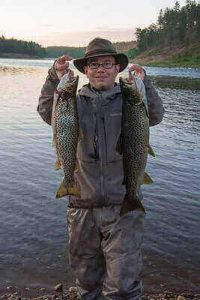
6. Position yourself so you are facing into the current as the trout are. This will have you approaching the trout from its tail. Continue to cast upstream and across the current while bringing the lure directly downstream or down and across. This makes the lure move with the current just as a trout sees its next meal.
7. Rainbow and brook trout will hit a lure that is traveling downstream with the current and when it is coming upstream.
8. It is always smart fishing to study the water and determine what the prey trout are feeding on in the body of water. You can also ask other anglers or stop at a local fishing shop and ask. With that information, you can now imitate that with your lures and baits. This process is called match the hatch.
9. Sometimes the trout will just not go for your lures or bait. In this situation, think out of the box and try something completely different. Something strange to the trout may get it to go for your offering. Large attractor flies are known to work in such situations.
10. One important fact to remember is that stocked trout are used to eating man-made fish food while native trout find their natural food. It is always good to know which type of trout is in the body of water you are about to fish in. This information will allow you to have the right lures and bait for the type of trout in the water.
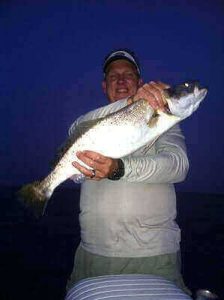
11. Ice fishing can be very productive in streams and lakes as trout are comfortable and feed well in cold water. Brook and lake trout, in particular, do well in cold water. Using jigs, spoons, and live and cut baits is very productive.
12. If you are returning the trout to the water, you have to handle it with the utmost care. You can release small trouts back into the water using hemostats. Always support the weight of large trout and revive it if that is needed.
13. The waters below dams are called tailwaters and they are great spots for trout. The water flow and temperature can be controlled which makes it an ideal spot for trouts.
14. A lighter line and leader will result in more fish. Trouts that reside in streams, creeks, and small rivers are spooky. Lighter lines and leaders work with the suspicious trouts in these bodies of water.
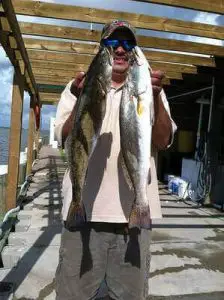
15. Use longer leaders and floating lines when fishing for trouts in shallow, clear water. Trouts in this area are usually fussy. You will get more strikes with longer leaders, especially when fishing for brook trout in small mountain creeks.
16. There are a good number of artificial lures that you can use with good results when fishing in smaller streams. Some are jigs, spoons, spinners, and plugs. However, the best choice is the spinner. They are light and land softly. Moreover, they snag the bottom less and catch fish.
17. Trout in small streams have access to insects that live along the banks of the river. Trout often benefits from ants, beetles, crickets, spiders, grasshoppers, and other insects that fall into the streams.
Additionally, some insects spend their larval stages growing and feeding in streams before they hatch and mate at the end of their life cycle. Some of those insects are mayflies, stoneflies, cassis flies, and midges. Using both types of insects as bait for trout can be very productive.
18. When you fish the smaller streams and creeks for trout, always remember your presence affects the trout. Be quiet and walk gently. Keep in mind that your steps can produce vibrations that are felt by the trouts.
Moreover, be mindful of the colors of the clothes you wear. They should not be flashy, but rather dull and they should easily blend with the environment. Avoid casting shadows over the water you will fish in.
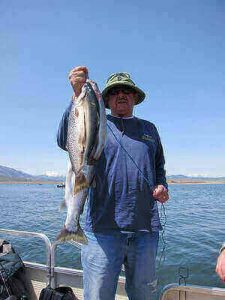
19. If it is legal in the state where you fish for trout, live bait can be very effective in streams and small rivers.
20. If you are fishing for trout in larger rivers, you will need heavier tackles as the rivers are faster and not very clear.
21. Larger lures work better in larger rivers. They can be cast further, thereby covering more water.
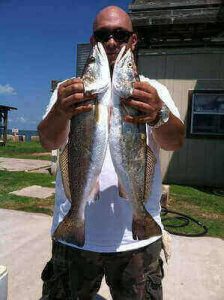
22. In large rivers, streamers can be very effective in catching trout. You can tie them to mimic bait fish, insects, and crustaceans. Streamers are also fished across and down current.
23. Natural bait is very effective in large rivers. Nightcrawlers, minnows, and crustaceans are just a few of the live bait that can be used to great effect in large rivers. Eggs can also be used to catch salmon.
24. The techniques of trolling and drifting are very effective in fishing for trout in large rivers. Trolling and drifting allow the angler to cover a lot of water searching for trout.
25. Trolling is also very effective for fishing trout in lakes. You can present multiple baits and different depths searching for trouts. You can use spoons and plugs when trolling.
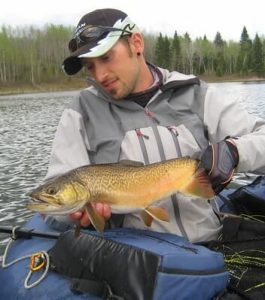
26. Trouts in lakes are constantly cruising in search of food, unlike trout in rivers. Trout in rivers linger in certain spots because of the current.
27. You can catch trout in lakes by fly fishing. Trouts in lakes are often seen on the surface feeding on insects. You can mimic snails, freshwater shrimps, and other aquatic insects and fish using fly patterns to catch trout. You can learn to catch more fly fish by reading this article on fly fishing tips.
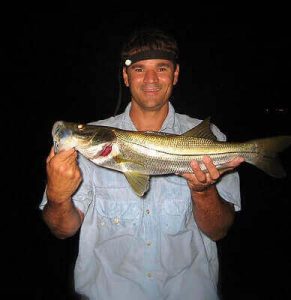
Trout Live Baits
1. Nightcrawlers
Nightcrawlers are a tried-and-true bait choice for anglers targeting trout, prized freshwater fish known for their beauty and fighting spirit. These large, juicy earthworms emit a natural scent and possess lively movements that attract trout to strike.
Anglers typically rig nightcrawlers on small hooks or bait rigs and present them in areas where trout are likely to be found, such as near riffles, undercut banks, or deep pools. The enticing aroma and wriggling action of the nightcrawlers provoke aggressive strikes from trout, making them a favored bait option.
Whether fished on the bottom or drifted through the water column, nightcrawlers offer versatility and effectiveness in enticing trout into biting. With their widespread availability and proven success in attracting trout, nightcrawlers provide anglers with a reliable and rewarding option for pursuing these prized freshwater fish, ensuring an enjoyable and productive fishing experience on the water.
2. Salmon Eggs
Salmon eggs, also known as spawn or roe, are a highly effective bait choice for anglers targeting trout, prized freshwater fish known for their beauty and fighting spirit. These small, brightly colored eggs emit a natural scent and possess a texture that trout find irresistible.
Anglers typically rig salmon eggs on small hooks or bait rigs and present them in areas where trout are likely to be found, such as near riffles, undercut banks, or deep pools. The natural scent and appearance of the salmon eggs provoke aggressive strikes from trout, making them a favored bait option.
Whether fished on the bottom or drifted through the water column, salmon eggs offer versatility and effectiveness in enticing trout into biting. With their availability at bait shops and proven success in attracting trout, salmon eggs provide anglers with a reliable and rewarding option for pursuing these prized freshwater fish, ensuring an enjoyable and productive fishing experience on the water.
3. Crayfish
Crayfish are a highly effective and natural bait choice for anglers targeting trout, esteemed freshwater fish known for their strength and voracious appetite. These small crustaceans emit a distinct scent and possess a realistic appearance that trout find irresistible.
Crayfish are usually rigged on small hooks or bait rigs and present in areas where trout are likely to be found, such as near rocky bottoms, submerged logs, or deep pools. The natural movement and scent of the crayfish provoke aggressive strikes from trout, making them a favored bait option.
Whether fished on the bottom or drifted through the water column, crayfish offer versatility and effectiveness in enticing trout into biting. With their availability in many freshwater ecosystems and proven success in attracting trout, crayfish provide anglers with a reliable and rewarding option for pursuing these prized freshwater fish, ensuring an enjoyable and productive fishing experience on the water.
4. Minnows
Minnows are a classic and highly effective bait choice for anglers targeting trout, esteemed freshwater fish known for their strength and agility. These small fish emit a natural scent and possess lively movements that trout find irresistible.
Minnows are rigged on small hooks or bait rigs and present them in areas where trout are likely to be found, such as near riffles, undercut banks, or deep pools. The natural swimming action and scent of the minnows provoke aggressive strikes from trout, making them a favored bait option. Whether fished on the bottom or drifted through the water column, minnows offer versatility and effectiveness in enticing trout into biting.
With their widespread availability and proven success in attracting trout, minnows provide anglers with a reliable and rewarding option for pursuing these prized freshwater fish, ensuring an enjoyable and productive fishing experience on the water.
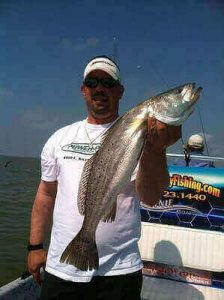
Trout Artificial Lures
1. Spoons
Spoons are a versatile and highly effective lure choice for anglers targeting trout, prized freshwater fish known for their strength and agility. These lures typically consist of a metal blade with a curved shape that mimics the movements of small baitfish or insects when retrieved through the water.
Anglers can choose from a variety of spoon sizes, colors, and finishes to match the preferences of trout in different conditions. Spoons can be cast and retrieved or trolled behind a boat, allowing anglers to cover a wide range of water depths and areas where trout are likely to be found, such as near submerged structures, rocky outcrops, or deep pools.
The flashy and erratic movement of the spoon attracts the attention of trout from a distance, provoking aggressive strikes. With their versatility and proven effectiveness in attracting trout, spoons provide anglers with a reliable and rewarding option for pursuing these prized freshwater fish, ensuring an enjoyable and productive fishing experience on the water.
2. Jigs
Jigs are a versatile and effective lure choice for anglers targeting trout, esteemed freshwater fish known for their strength and agility. These lures typically consist of a lead head adorned with a soft plastic body or feathers, mimicking the appearance of small baitfish, insects, or other prey.
Anglers can choose from a variety of jig sizes, colors, and styles to match the preferences of trout in different conditions. Jigs can be cast and retrieved or jigged vertically, allowing anglers to target trout in various water depths and areas where they are likely to be found, such as near submerged structures, rocky outcrops, or deep pools.
The lifelike movement and realistic appearance of jigs provoke aggressive strikes from trout, making them a favored lure option. With their versatility and proven effectiveness in attracting trout, jigs provide anglers with a reliable and rewarding option for pursuing these prized freshwater fish, ensuring an enjoyable and productive fishing experience on the water.
3. Plugs
Plugs are a popular and effective lure choice for anglers targeting trout, esteemed freshwater fish known for their strength and agility. These lures typically consist of a hard plastic or wooden body with treble hooks attached, designed to imitate the appearance and swimming action of small baitfish or other prey.
Anglers can choose from a variety of plug sizes, shapes, and colors to match the preferences of trout in different conditions. Plugs can be cast and retrieved, trolled behind a boat, or twitched erratically to mimic injured prey, allowing anglers to cover a wide range of water depths and areas where trout are likely to be found, such as near submerged structures, rocky outcrops, or deep pools.
The lifelike movement and realistic appearance of plugs provoke aggressive strikes from trout, making them a favored lure option. With their versatility and proven effectiveness in attracting trout, plugs provide anglers with a reliable and rewarding option for pursuing these prized freshwater fish, ensuring an enjoyable and productive fishing experience on the water.
4. Crankbaits
Crankbaits are a versatile and highly effective lure choice for anglers targeting trout, esteemed freshwater fish known for their strength and agility. These lures typically consist of a hard plastic or wooden body with a diving lip and treble hooks attached, designed to imitate the appearance and swimming action of small baitfish or other prey.
Anglers can choose from a variety of crankbait sizes, shapes, and colors to match the preferences of trout in different conditions. Crankbaits can be cast and retrieved, trolled behind a boat, or worked along the bottom to mimic injured prey, allowing anglers to cover a wide range of water depths and areas where trout are likely to be found, such as near submerged structures, rocky outcrops, or deep pools.
The lifelike movement and realistic appearance of crankbaits provoke aggressive strikes from trout, making them a favored lure option. With their versatility and proven effectiveness in attracting trout, crankbaits provide anglers with a reliable and rewarding option for pursuing these prized freshwater fish, ensuring an enjoyable and productive fishing experience on the water.
5. Spinners
Spinners are a classic and highly effective lure choice for anglers targeting trout, esteemed freshwater fish known for their strength and agility. These lures typically consist of a metal blade or blades that spin around a wire shaft, creating flash and vibration in the water. Attached to the spinner is a small hook adorned with colorful beads or a feathered treble hook to mimic prey.
Anglers can choose from a variety of spinner sizes, colors, and blade designs to match the preferences of trout in different conditions. Spinners can be cast and retrieved, allowing anglers to cover a wide range of water depths and areas where trout are likely to be found, such as near submerged structures, rocky outcrops, or riffles.
The flashy movement and vibrations produced by spinners attract the attention of trout from a distance, provoking aggressive strikes. With their versatility and proven effectiveness in attracting trout, spinners provide anglers with a reliable and rewarding option for pursuing these prized freshwater fish, ensuring an enjoyable and productive fishing experience on the water.
The Bottom Line
Trout is one of the most popular and widespread fish in the world. They are elusive and great fighters. Additionally, they are abundant and tasty. These characteristics make trout very appealing to anglers.
In this article, we share trout fishing tips that beginners and more experienced anglers can use to catch more trout. You can also read walleye fishing tips, how to catch Artic Char, and muskie fishing tips for beginners.
